
The fast-food business may never have been in more flux than it is now. Higher food costs and increased competition are hitting the whole industry, while erstwhile mainstays (and not just McDonald’s) are dealing with ever-more-fickle consumers and new trends toward healthier fare. Given all that, it might seem surprising how well the industry as a whole (leaving out McDonald’s) is doing. Here’s a snapshot look at several of the biggest players.
McDonald’s
One-year stock performance: down 5%
This is the big one. Tastes are shifting and lifestyles are changing, taking consumers away from the same-ol’, same-ol’. People seeking quick meals are looking for more quality, for which they’ll pay a little (but not too much) more at places like Chipotle, Starbucks, or the prepared-foods counter at the supermarket. And when they just want a burger, more of them are opting for higher-end fare like that served up by Five Guys and others. Or else they’re going to Burger King or Wendy’s, both of which have been concentrating on upgrading their image.
In response, CEO Steve Easterbrook is trying to remake the company. He’s initiated a global restructuring, slashed costs, and revamped menus—including all-day breakfast, new toppings, pastries (to keep more people from fleeing to Starbucks and Dunkin’ Donuts), and the new, $5 Sirloin Third Pound Burger. It will be a while before we can know how successful these initiatives might be, but it was more than clear that something radical needed to be done.
Yum Brands
One-year stock performance: up 18%
Yum gets half its revenue from China, where it has about 7,000 Pizza Hut and KFC outlets in about 1,000 cities. Growth in that market had served the company well for years, and might again in the future, but for now, the company’s reliance on China is a problem. For one thing, consumer tastes are shifting there, just as they are in the United States and elsewhere. KFC and Pizza Hut are no longer novelties as both foreign and domestic competitors gain strength. A scandal last summer involving bad meat from a KFC supplier didn’t help matters.
But that doesn’t mean things can’t be turned around. The company’s stock got a big boost last week, when billionaire investor Daniel S. Loeb took a “significant stake” in Yum, citing its potential in China as a major draw.
Subway
One-year stock performance: n/a
Probably because it’s a private company, Subway often gets left out of examinations of the fast-food biz. But it’s the second-largest chain in the world, with about 43,000 locations (about 25,000 of them in the United States), and it brings in somewhere around $20 billion in revenue.
With its human mascot, weight-loser Jared Fogel, Subway has for years pitched itself as the “healthier” alternative to greasy burgers, pizza, tacos, and fried chicken. And that has largely worked—but fast-food is increasingly competitive for all players, and Subway isn’t immune. Nation’s Restaurant News reported in February that growth was slowing and revenues were nearly flat.
Starbucks
One-year stock performance: up 14%
Yes, it’s a coffee chain, but it’s also a fast-food chain (sort of), as McDonald’s surely believes. Starbucks has been adding various foods to its menu for years, and its expected to keep adding more. That helped it boost store traffic by 3% in its latest quarter. The size of customer purchased also rose – by 4% (people aren’t ordering extra lattes—they’re buying sandwiches and salads.)
The company’s recent clumsy attempt at curing America’s racial ills doesn’t seem to have hurt it much. Last month, a Goldman Sachs analyst said that although Starbucks’ breakfast offerings have performed only so-so, there’s huge potential in its plans to expand its lunch menu.
Burger King
One-year stock performance: n/a
Things are looking a bit better for Burger King than they were a few years ago, even though the chain hasn’t made any big changes. Even as executives were focused on the merger with Canadian coffee chain Tim Horton’s, sales stabilized, and in its most recent quarter, the company reported total sales at Burger King were up by 9.6% and same-store sales were up by 4.5%.
Burger King has been revamping stores and adding some menu items, like the heavily advertised chicken fries. But most of its efforts have gone into overall marketing and operations.
Wendy’s
One-year stock performance: up 2.2%
The No. 3 burger chain has been rejiggering its menu some, and pushing its online promotional efforts in an effort to update its brand to appeal to a younger crowd. It recently announced it will start selling organic Honest Tea drinks, and it’s testing a veggie burger that people seem to actually like. In the meantime, the company is working to spin off more of its stores to franchisees, which will help with both costs and profits in the future, but in the near term is tending to tamp down revenue.
Still, Wendy’s, which will release its first-quarter results on Wednesday, has reported same-store sales growth every quarter since the beginning of 2013.
Dominos
One-year stock performance: up 46%
The pizza chain’s TV commercial might elicit sniggers (“We’ve changed from Dominos Pizza to Dominos), but the strategy of adding new menu items like pasta and sandwiches — along with improving its pizza somewhat — seems to be working. In its latest quarter, Dominos reported that sales were up 11%, and same-store sales were up 16%
17. The Krusty Burger

The fictional Simpsons hangout was so popular, it became a real-life restaurant in 2013, when Universal Studios Orlando opened a Simpsons theme park. Ironically, menu staples like the Clogger Burger and the Mother Nature Burger—dismissed as gross on the cartoon—fetch over $10 in real life.
16. The Ghost Burger

In October of 2014, Chicago heavy-metal-themed bar Kuma’s Corner launched one of the most outrageous burgers to date: the Ghost Burger—it’s named after Swedish metal band Ghost B.C.—was topped with an unconsecrated Communion wafer. The dish sold well, but angered Catholics (and garnered national headlines), prompting the owners to donate $1,500 to Catholic Charities of the Archdiocese of Chicago.
15. The Varsity Burger
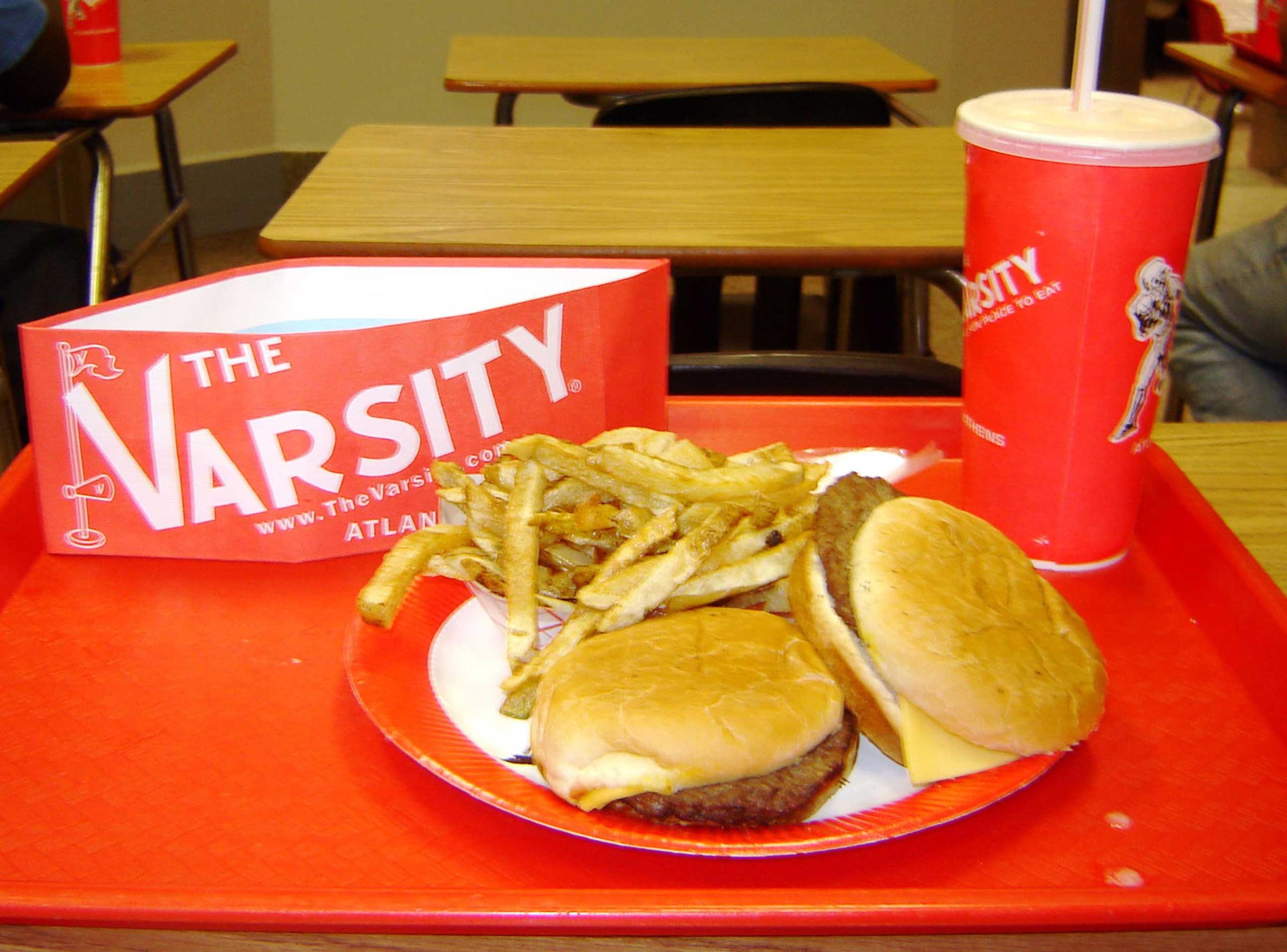
The ordering lingo for this Atlanta staple, which debuted in 1928, is almost as delicious as the burger itself: you get it “all the way” in lieu of “with onions,” and “walk a steak” replaces “to-go.” These branding gimmicks were later replicated by burger chains like In-N-Out, whose secret menu (see: “animal style” and “protein style”) has helped lure millions of customers.
14. The Umami Burger
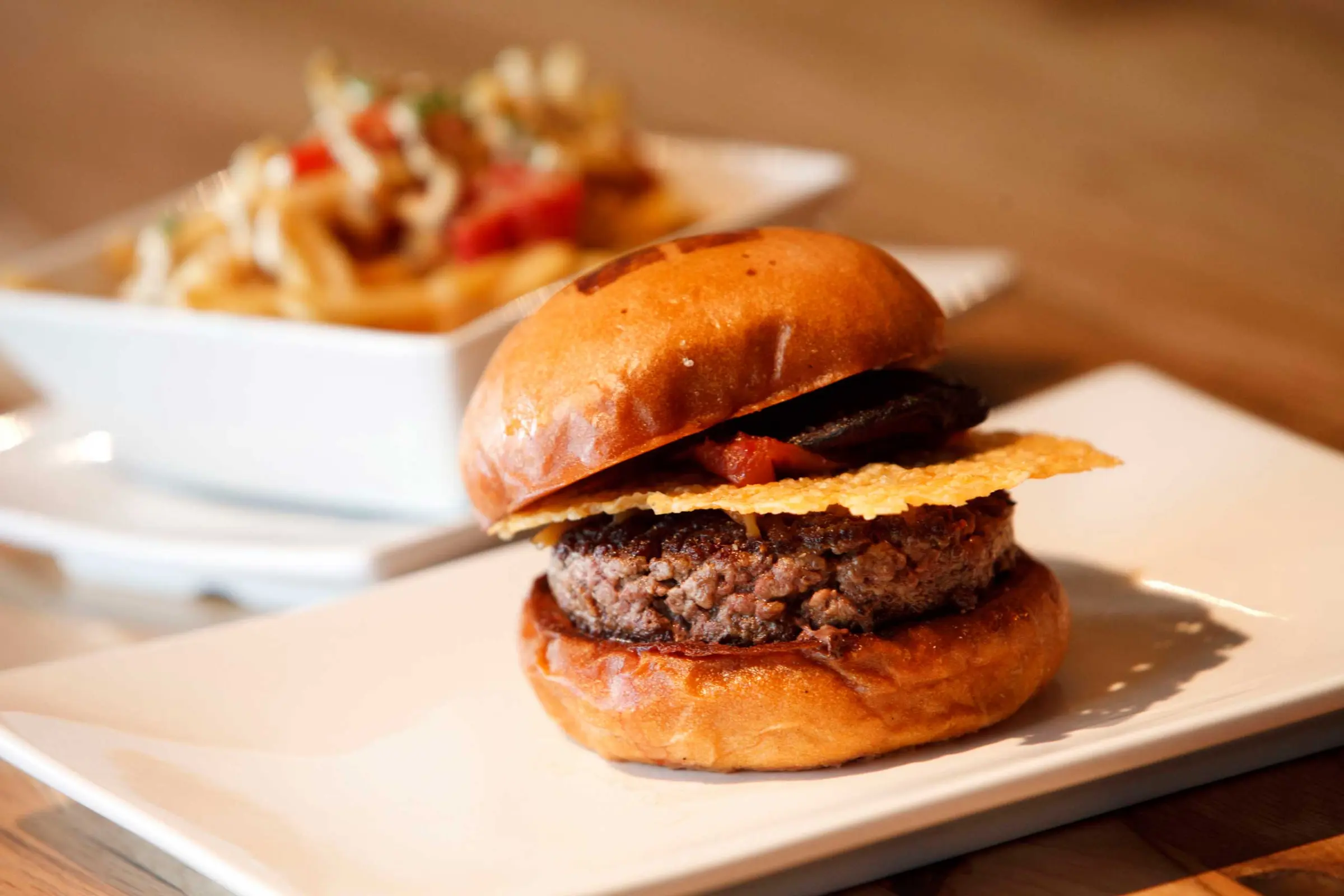
Arguably the first “modernist cuisine” patty, the Umami Burger—unveiled by Adam Fleischman in 2009—is meant to taste like, well, umami (a savory taste embodied in MSG), incorporating such toppings as soy-roasted tomatoes, parmesan crisps and pickled ginger. The patty’s success has fueled the opening of 21 additional locations.
13. The Ray’s Hell Burger
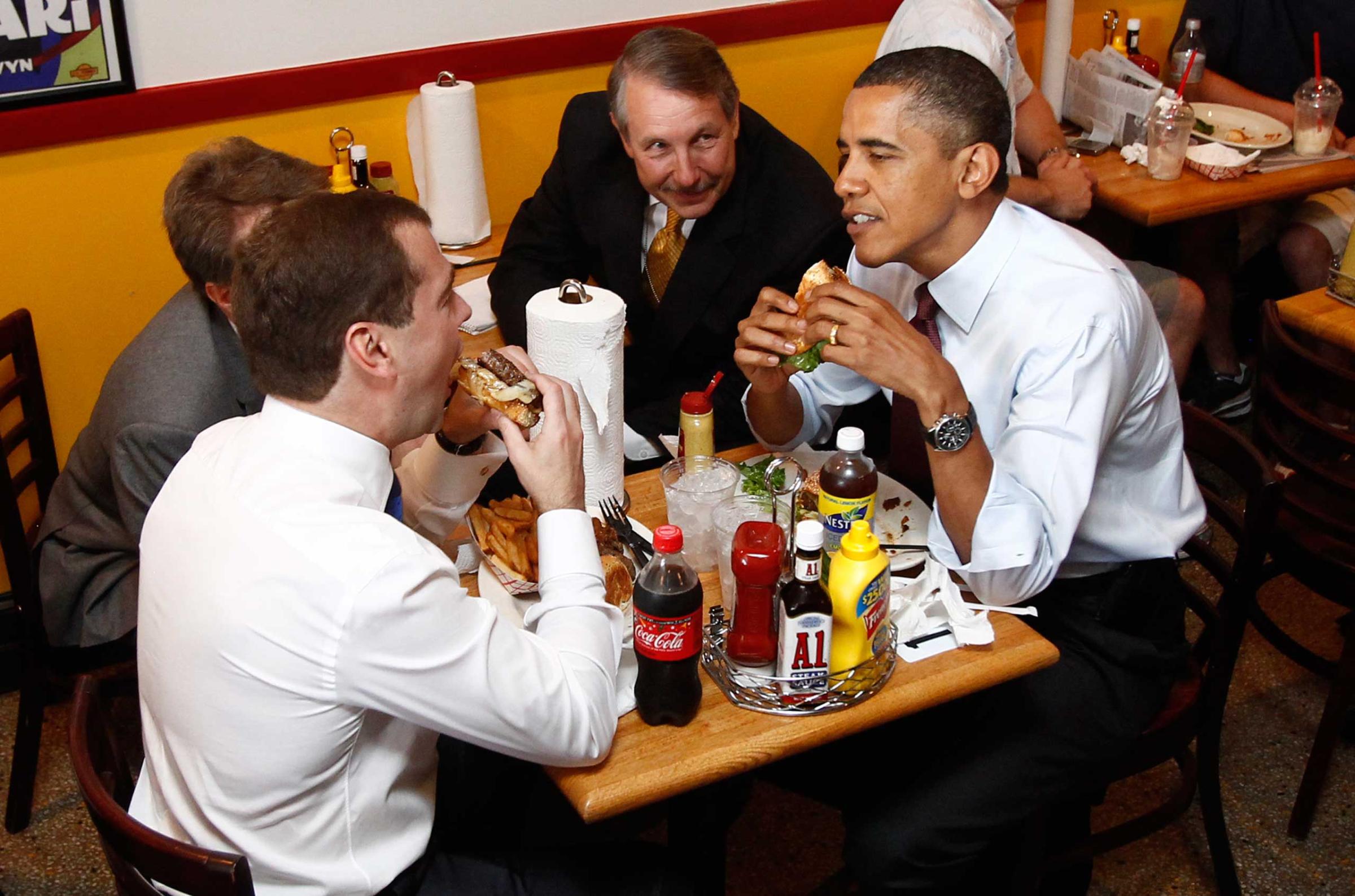
President Obama treated then-Russian President Dmitri Medvedev to one of these patties in Arlington in 2010—Obama’s was reportedly ordered plain, while Medvedev added jalapeños, mushrooms and onions. And the meal may have fostered intimacy between the two leaders: less than two years later, Obama was caught on a hot mic asking Medvedev for space on missile defense policy, explaining, “This is my last election. After my election I have more flexibility.” Medvedev was amenable.
12. The Ramen Burger

This so-called hybrid burger—two parts ramen, one part beef patty—drew vast crowds at the Smorgasburg outdoor food market in Brooklyn throughout the summer of 2013 (mere months after the cronut craze). Soon, the Keizo Shimamoto creation had enough hype to debut in L.A. and even inspired a knockoff in the Philippines, cementing its status as a global obsession. Alas, there’s no official ramen-burger restaurant yet—would-be tasters have to monitor its Facebook page to see where it’ll be served next.
11. The MOS Burger
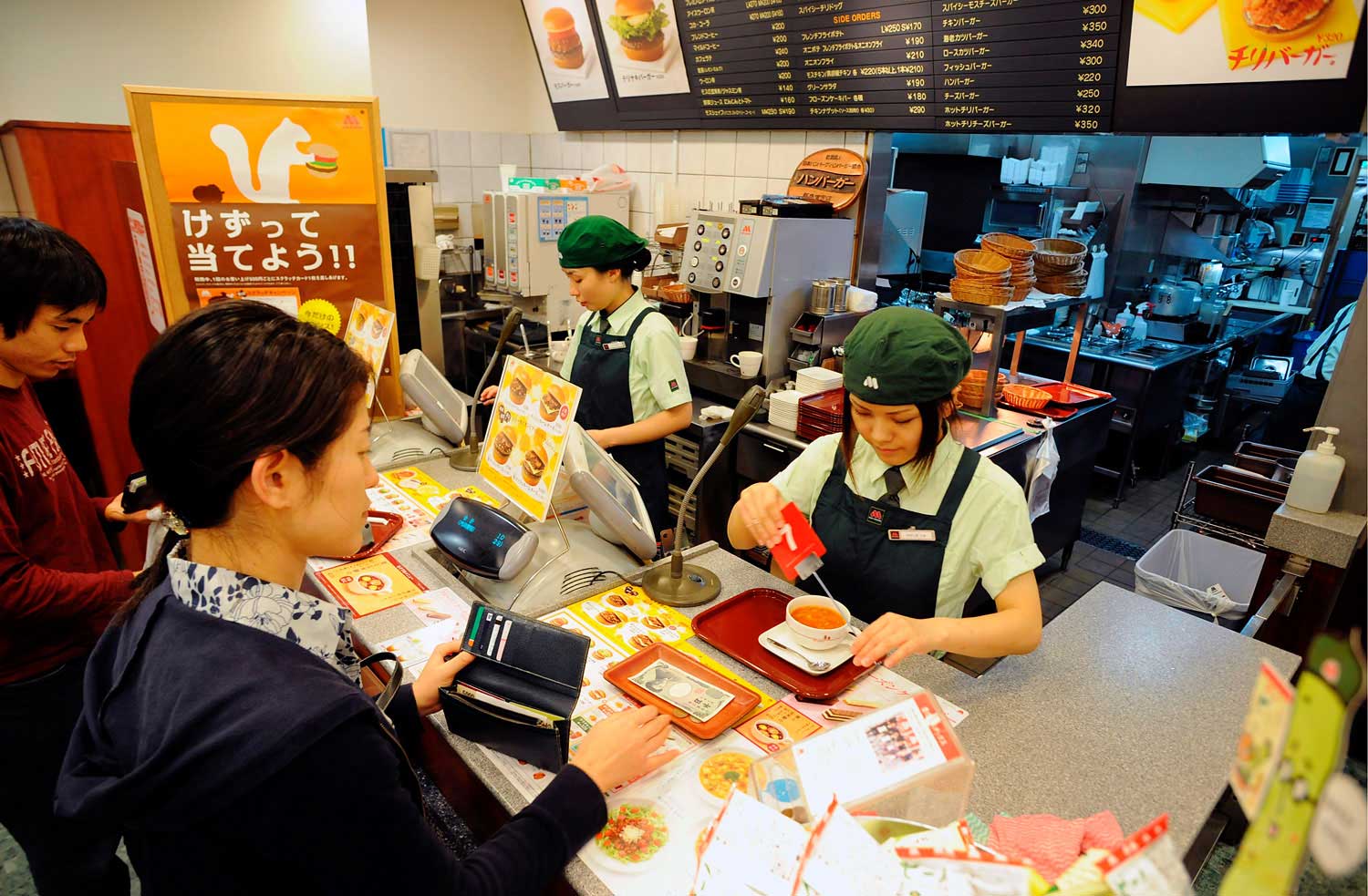
The burger may be a mostly American creation, but many other countries have launched their own chains—and burger variants—to capitalize on its success. Among the most prominent: MOS (a.k.a. “Mountain Ocean Sun”) Burger, which opened in Japan in 1972. Although its signature patty mimics the U.S. classic, other items are designed around Japanese tastes; there’s a teriyaki burger and a grilled salmon rice burger. Similar tactics have worked in other regions, too: in India, Nirula’s chain serves potato and mint patties in lieu of beef, and in Malaysia, Ramly Burger offers patties wrapped in an egg envelope inside the bun.
10. The Jucy Lucy

Although this twist on the cheeseburger—in which the cheese is melted inside the patty—was reportedly invented in the 1920s, when chefs were still experimenting with the burger, it gained national attention in 2008, thanks to a feud between two Minneapolis bars that both claim to have “invented” it. Since then, there have been numerous imitators, proving that a little innovation and a dash of hype is all it takes to reinvigorate enthusiasm for a classic.
Correction: The original version of this story misstated the date of invention of the Jucy Lucy. It was put on the menu at Matt’s in 1954.
9. The Lab-Grown Burger
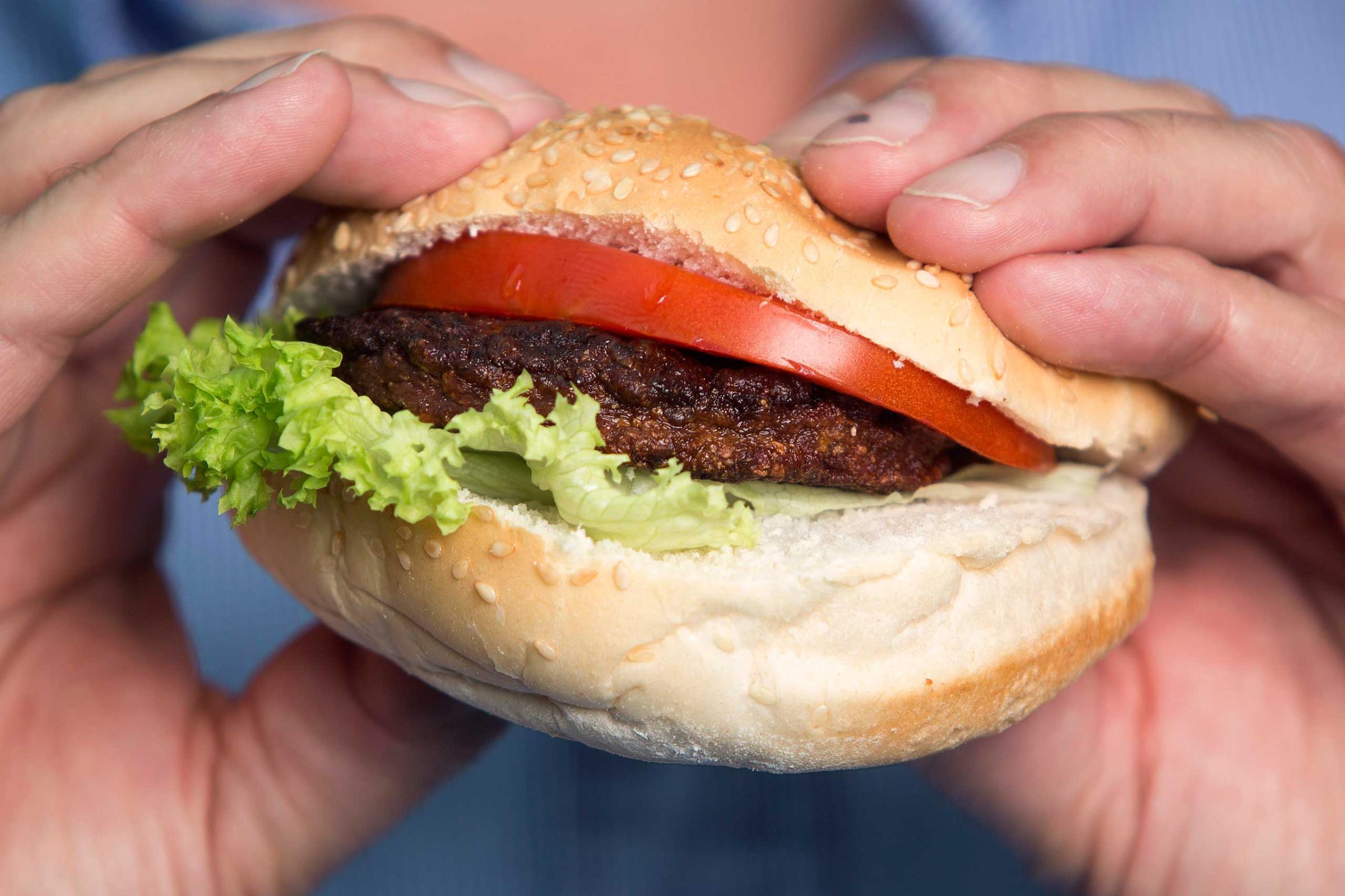
With global demand for meat expected to grow 60% by 2050, the amount of farmland and grain needed to feed those chickens, pigs and cows may be unsustainable. But this burger, which was unveiled last year by Mark Post of Maastricht University, has none of those hang-ups—it’s grown in a lab from cow stem cells, which means it may even be palatable for vegetarians. The only issue: for now, it carries a $325,000 price tag.
8. The Quadruple Bypass Burger
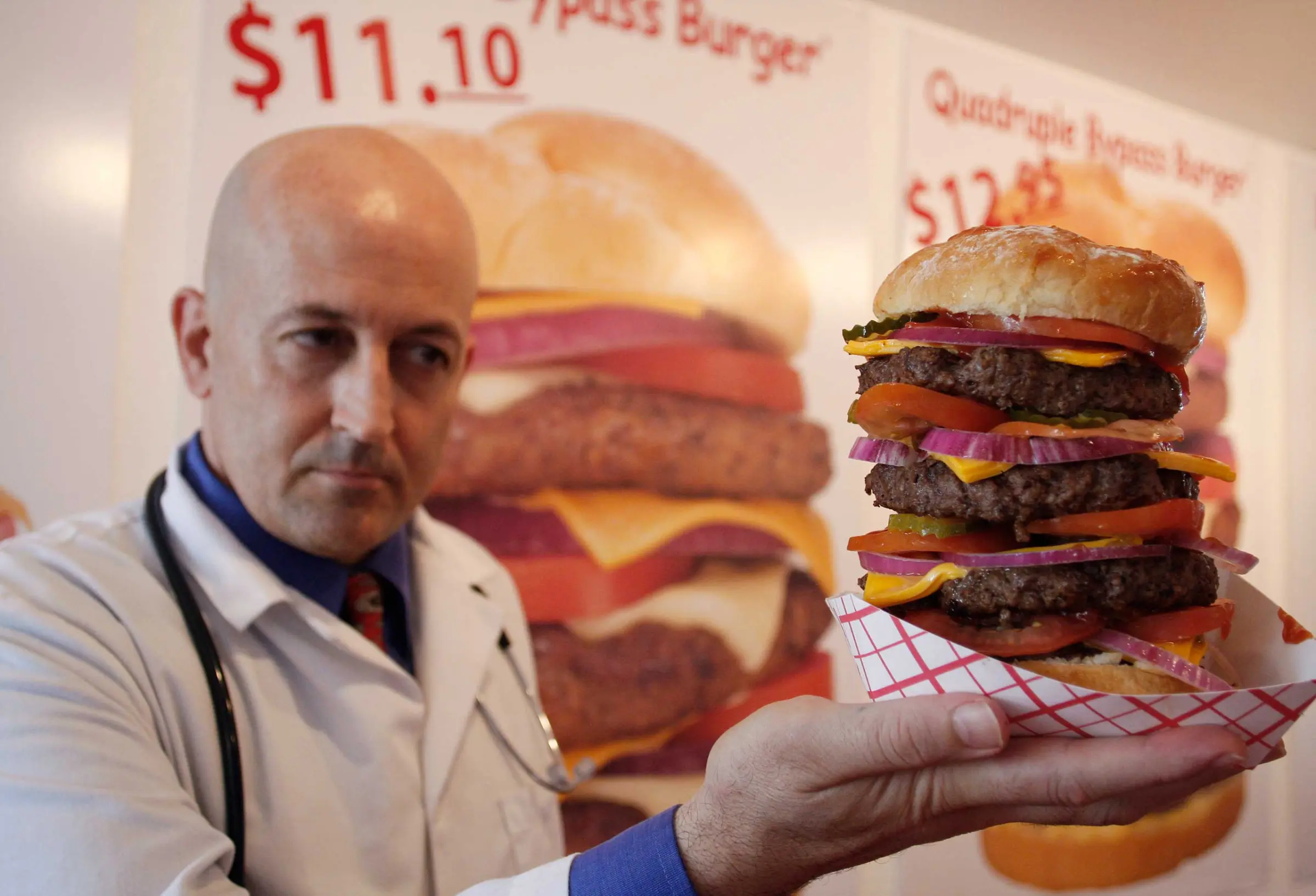
Jon Basso, owner of The Heart Attack Grill, has drawn national attention (and outrage) for his gluttonous offerings since the restaurant first opened in 2005, offering free meals for those over 350 pounds. His most notorious dish is this behemoth, which layers eight slices of cheese between four half-pound patties and clocks in at nearly 10,000 calories. One regular customer, a kind of spokesman for the restaurant, actually died in front of the Las Vegas eatery in 2013. The burger became an exemplar of the more-is-more burger culture, preceding a series of other gluttonous dishes including Paula Deen’s doughnut-encased Lady’s Brunch Burger.
7. The ShackBurger
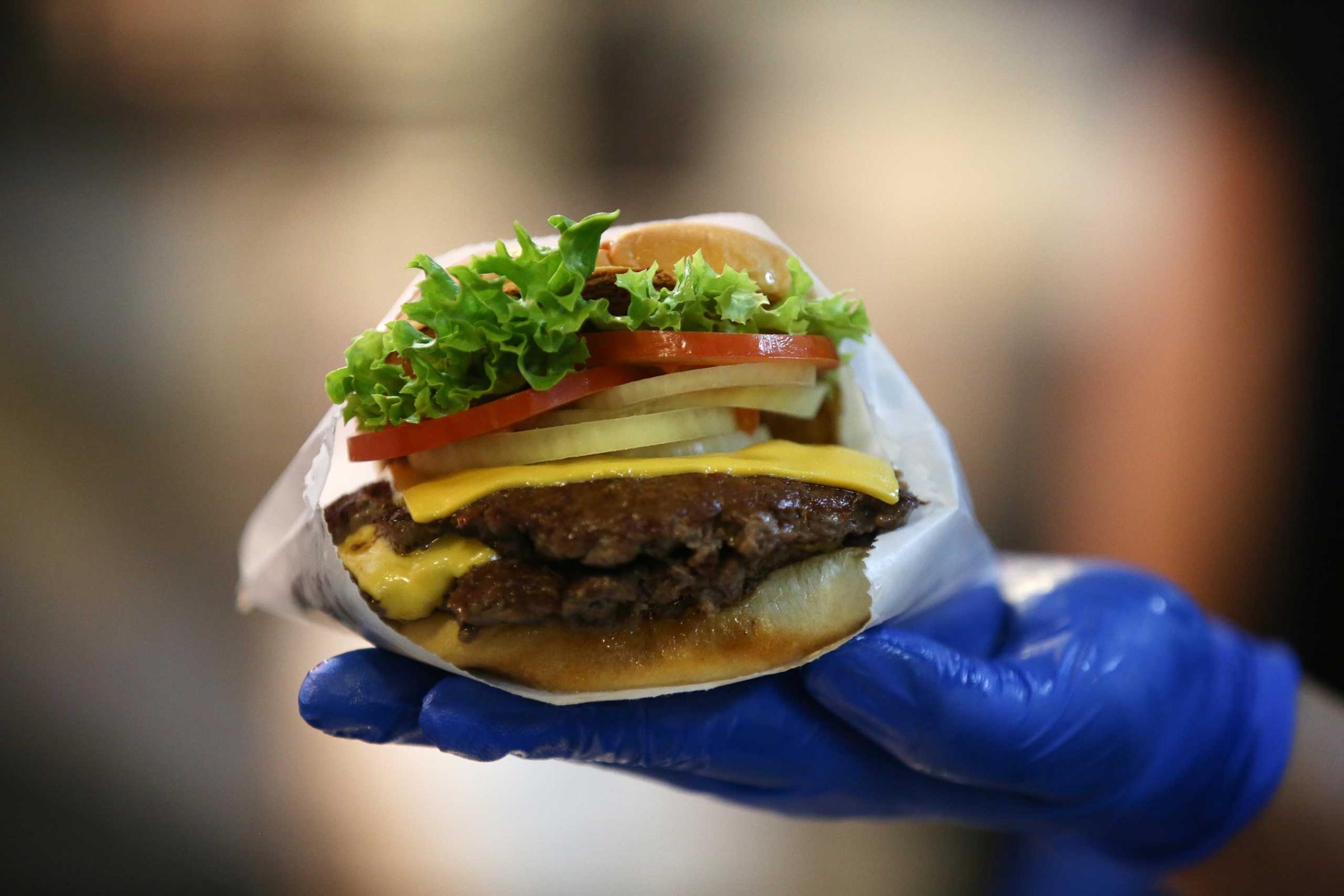
The 2004 invention—topped with a tangy, secret-recipe ShackSauce—was the first burger to start a food craze, inspiring hordes of eaters to wait in lines that stretched throughout New York’s Madison Square Park. And Danny Meyer’s decision to grind prime cuts of whole muscle, rather than scraps, completely transformed the way we think of burgers, according to Josh Capon, the four-time winner of New York’s Burger Bash.
6. The Gardenburger
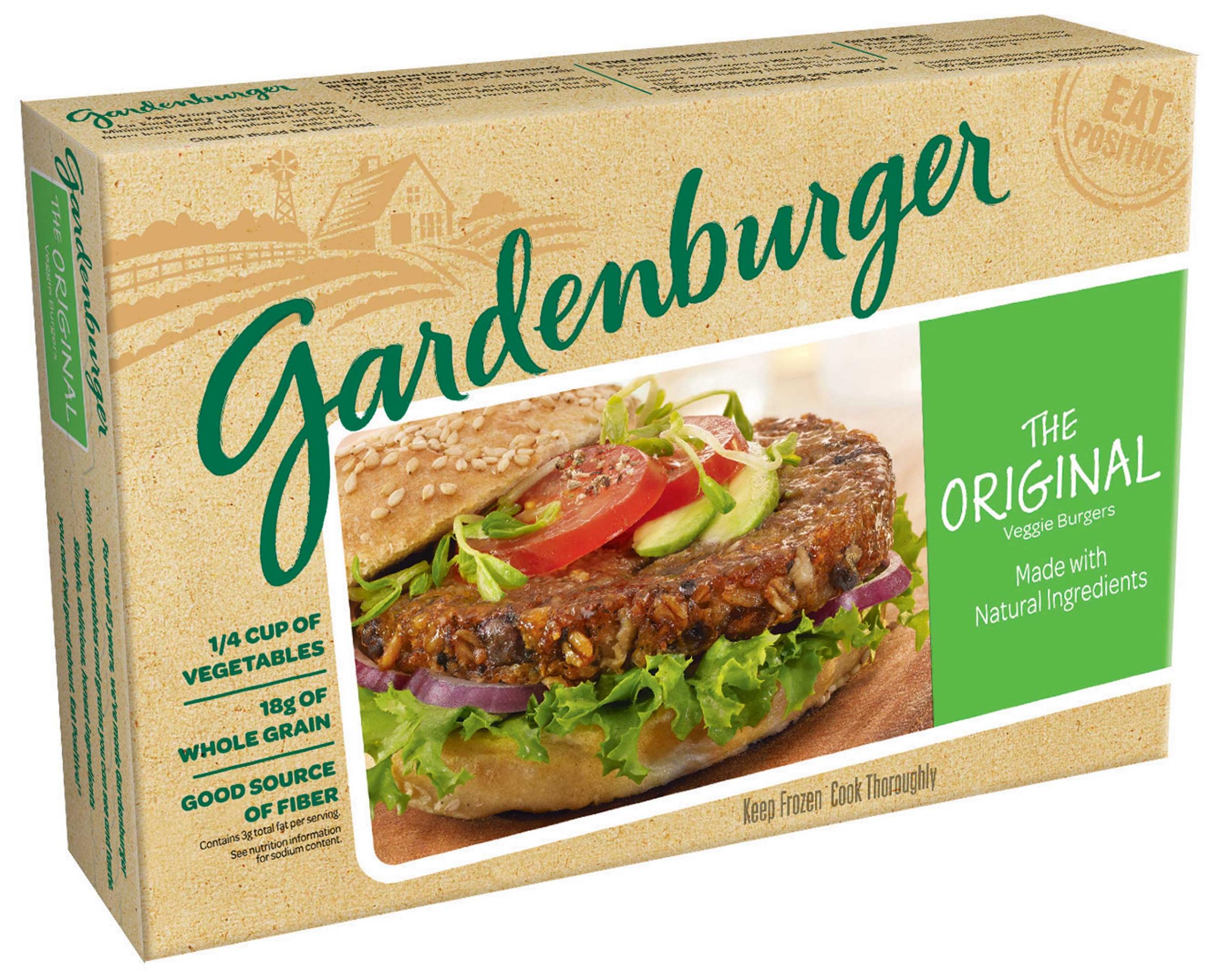
The original veggie burger was invented in 1981 at—go figure—the Gardenhouse, an Oregon vegetarian restaurant, and it consisted mainly of leftover vegetables and grains. Before long, it was the most popular item on the menu, living on even after the restaurant closed as a frozen-food item that was packaged and sold internationally. Today, the Gardenburger and its imitators, from MorningStar to Boca, have become mainstays at conscientious cook-outs nationwide.
5. The Burger King Whopper
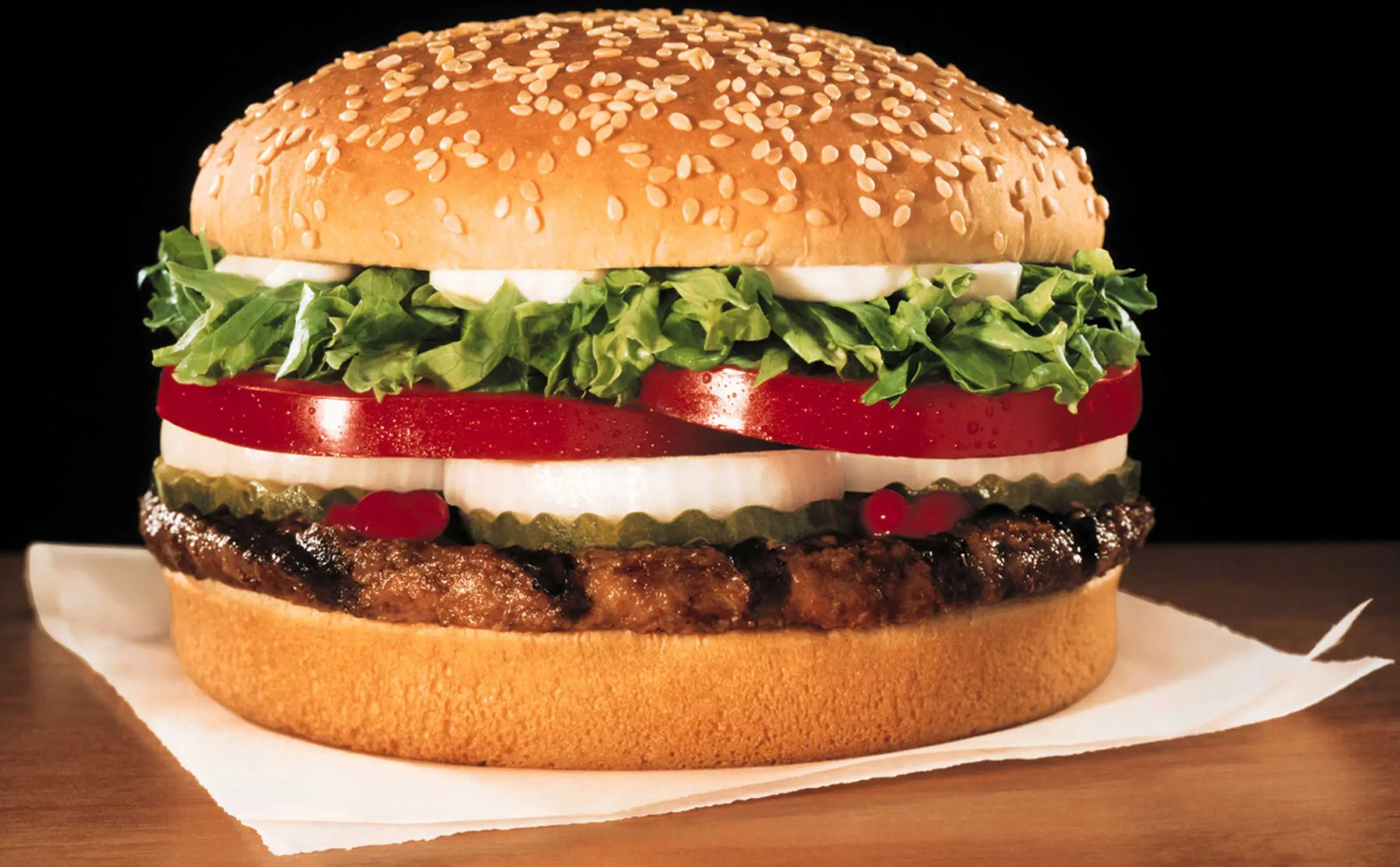
The quarter-pound patty, introduced in 1957, was the fast food industry’s first gimmick burger—developed as a premium alternative to McDonald’s, Wendy’s and others. Burger King’s stunt inspired its competitors to create their own “deluxe” versions. Among them: the McDonald’s Big Mac.
4. The 21 Burger

When the 21 Club introduced its gourmet burger in the late 1940s or early 1950s, New Yorkers were shocked that an upper-class establishment would offer something as lowly as the burger—and at the exorbitant price of $2.75, compared with McDonald’s’ 15 cents. Nevertheless, it was a hit. “The [higher quality] beef did make a difference,” says Andrew F. Smith, author of Hamburger: A Global History, “and it certainly was something very different than simply fast food.” The luxury burger has since become a mainstay at many higher-end restaurants, from Le Parker Meridien (a high-low offering in the lobby’s Burger Joint) to db Bistro Moderne (the truffle, foie gras and short ribs DB Burger) to Hubert Keller’s (the foie gras-topped Fleur Burger, which costs $5,000 and is served with a bottle of 1995 Château Pétrus).
3. The In-N-Out Burger
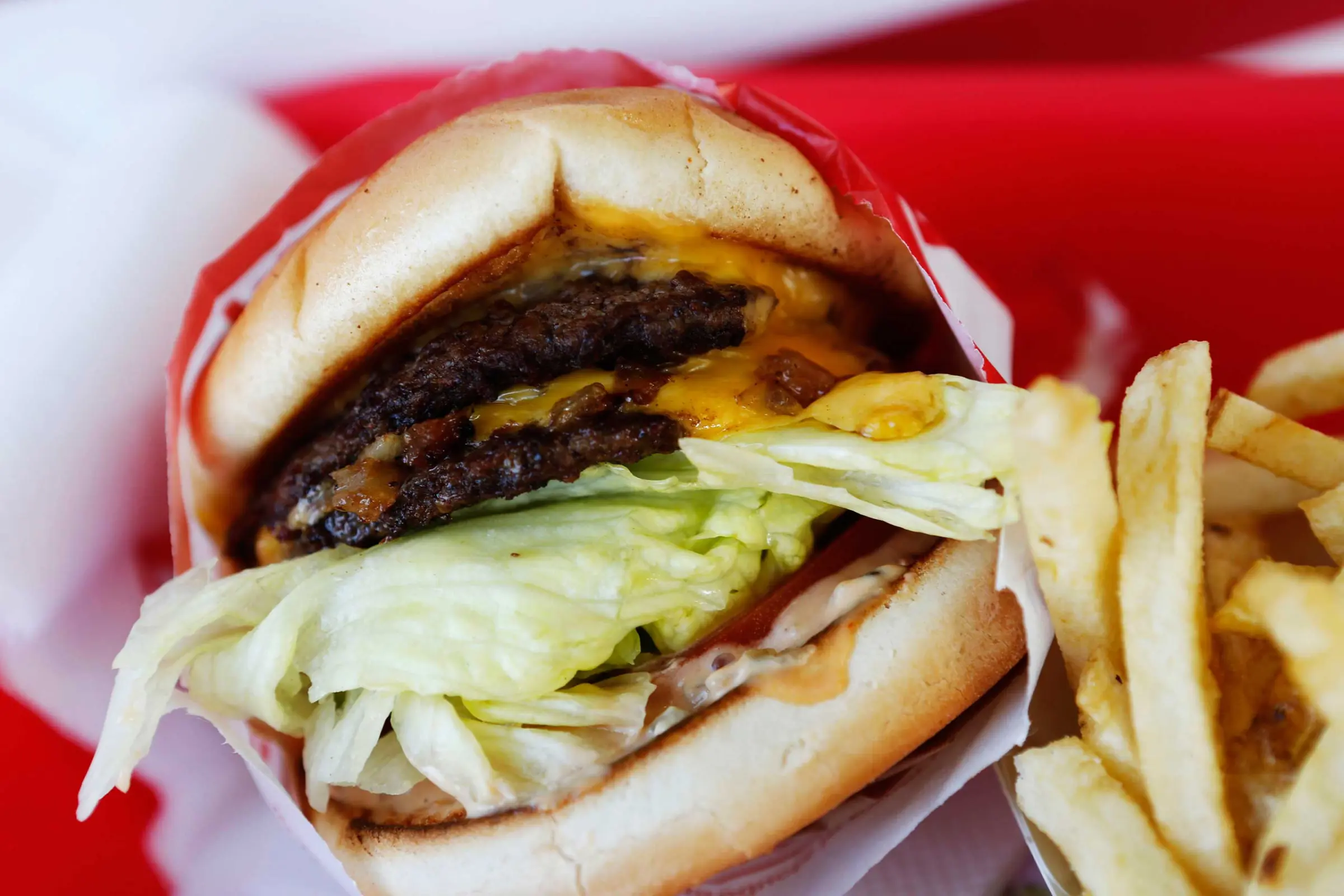
Whereas McDonald’s focused on fast, In-N-Out focused on food—its signature burger, which debuted in 1948, was made from locally sourced ground beef and fresh vegetables. That approach may have prevented In-N-Out’s expansion (it has just 294 locations today, compared with McDonald’s 34,000-plus), but it certainly hasn’t dampened foodie enthusiasm: the In-N-Out burger routinely tops best-of burger lists, and has inspired the launch of other higher-end fast food chains, such as Five Guys.
2. The McDonald’s Burger
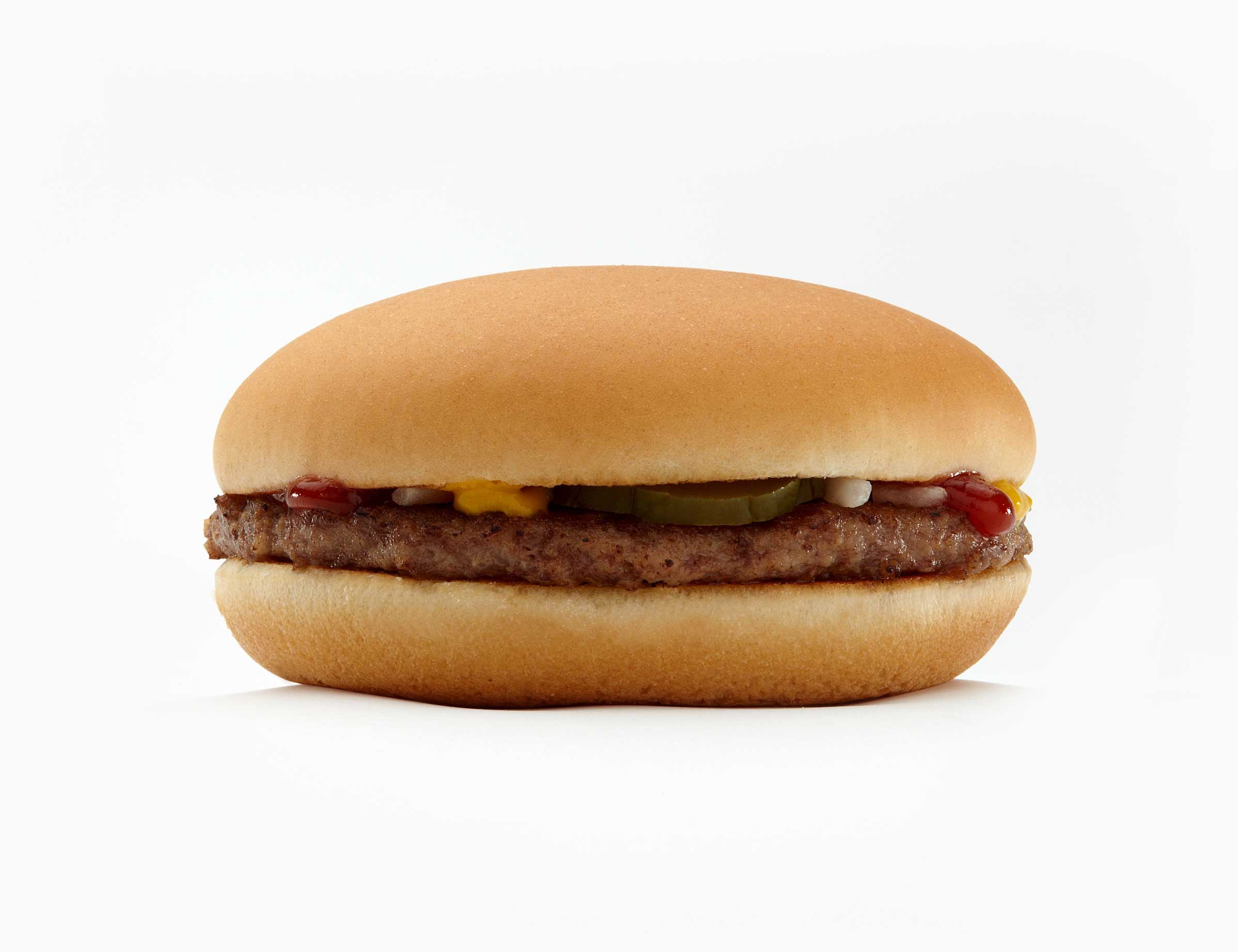
Behold, the burger that Smith says “moved fast food from a small operation to a global operation.” The original McDonald’s patty, which debuted in San Bernardino, Calif., spawned an empire that now spans 118 countries—making the price of its beefier counterpart, the Big Mac, ubiquitous enough to serve as an informal measure of purchasing-power parity, as seen in The Economist’s Big Mac index.
1. The White Castle Slider
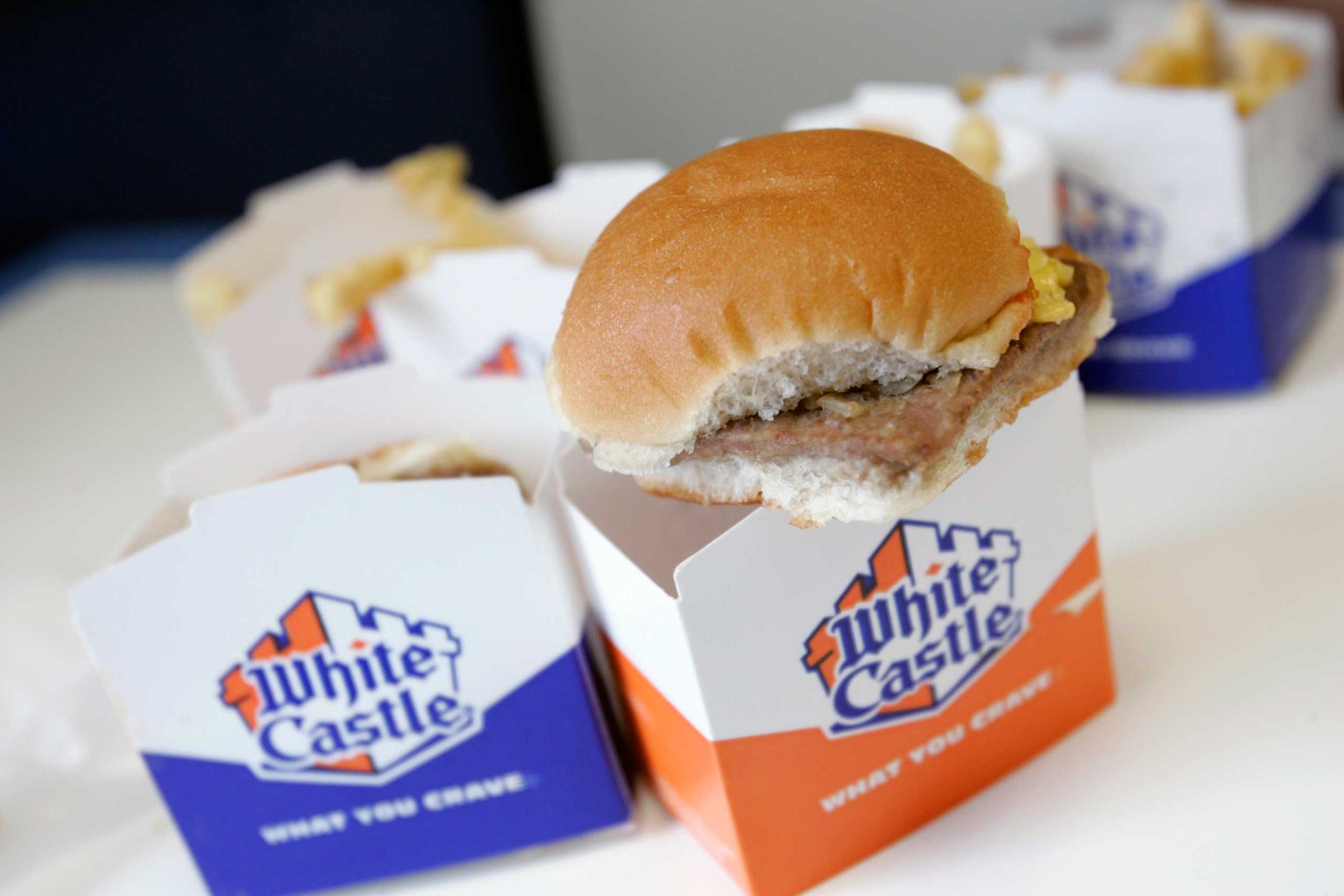
The now-iconic square patty—which debuted in 1921 at the first White Castle in Wichita, Kansas—was the first burger to spawn a fast food-empire: by 1930, White Castle had 10 U.S. locations. But more importantly, the restaurant’s emphasis on cleanliness—facilities were white and customers could watch their burger meat being ground through a window—helped quell fears that all ground beef was as unsanitary as the stuff depicted in Upton Sinclair’s best-selling The Jungle, which was released in 1906. Its success paved the way for the great American burger obsession.
More Must-Reads from TIME
- Why Biden Dropped Out
- Ukraine’s Plan to Survive Trump
- The Rise of a New Kind of Parenting Guru
- The Chaos and Commotion of the RNC in Photos
- Why We All Have a Stake in Twisters’ Success
- 8 Eating Habits That Actually Improve Your Sleep
- Welcome to the Noah Lyles Olympics
- Get Our Paris Olympics Newsletter in Your Inbox
Contact us at letters@time.com